Pallet Changing Machine: How to Swap Display Pallets Without Halting Sales Floors?
Picture a busy Saturday on your sales floor. Customers are everywhere. You have a new, attractive product display ready to go, but it's sitting on a rough, splintered wooden shipping pallet. To move it to a clean, customer-facing display pallet, your team has to manually unload and restack every single item. This process blocks the aisle, creates a safety hazard, and ties up staff who should be helping customers. Every minute this takes is a minute of lost sales and a poor customer experience. What if you could swap that entire pallet in under 60 seconds, with no manual handling and zero disruption?
A pallet changing machine, also known as a pallet inverter or pallet exchanger, is the solution. This equipment allows you to swap display pallets by securely clamping the entire product load, then either rotating it 180 degrees or pushing it smoothly onto a new pallet. This method eliminates manual restacking, protects products from damage, and completes the entire process in a fraction of the time, ensuring your sales floor remains active and profitable.
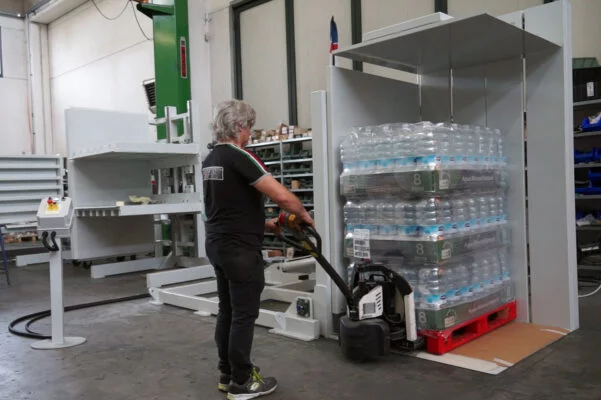
This might sound like a heavy industrial solution, but modern designs are perfectly suited for retail, warehousing, and distribution centers. As an engineer who has spent his life optimizing factory workflows, I see the same principles of efficiency at play here. Eliminating bottlenecks is key to growth, whether on a production line or a sales floor. Let’s explore how this simple but powerful machine can solve a common and costly logistical problem.
What is a Pallet Changing Machine and how does it benefit retail operations?
You see a logistical challenge in your store: moving goods from shipping pallets to display pallets is slow and inefficient. You know there must be a better way, but the term "pallet changing machine" might sound too complex or industrial for a retail setting. This hesitation is common. It often leads businesses to stick with the old manual method, accepting product damage, high labor costs, and operational delays as unavoidable. But you are missing a massive opportunity for improvement. Let me clarify what this machine is and how it works.
A pallet changing machine is a straightforward piece of equipment designed to do one job perfectly: swap the pallet beneath a full load of goods without disturbing the products themselves. For retail, this means you can receive goods on cheap, durable shipping pallets and quickly transfer them to clean, branded, or plastic pallets suitable for the sales floor. The benefits are immediate and significant. It drastically cuts down on labor costs, prevents damage to goods, improves employee safety, and ensures your product presentation is always fast and professional, helping you capitalize on every sales opportunity.
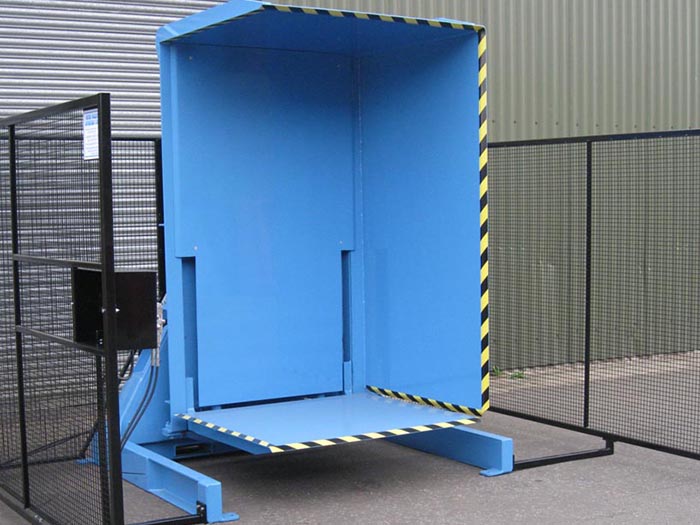
How These Machines Fundamentally Work
At its core, a pallet changer is simple. It uses a clamping mechanism to hold the product stack securely from the top and bottom or from the sides. Once the load is secure, the machine performs an action to allow the pallet swap. There are two primary types:
- Pallet Inverters: These machines clamp the load and rotate it 180 degrees. The old pallet is now on top and can be easily removed. You place the new pallet on the load, and the machine rotates everything back 180 degrees. The product is now on the new pallet, ready to go. This is excellent for stable, boxed goods.
- Pallet Exchangers (or Pushers): These machines clamp the load from the sides and sometimes from the top. They then push the entire product stack from the old pallet onto a new pallet waiting right next to it. This method is ideal for loads that cannot be inverted, like open-top boxes, liquids, or pails.
The Clear ROI for Retail Operations
As a business owner, you need to see the return on any investment. A pallet changer delivers a clear and measurable return. Think about the direct and indirect costs of manual handling.
| Metric | Manual Pallet Swapping | Using a Pallet Changer | Impact on Retail Operations |
|---|---|---|---|
| Time per Pallet | 20-30 minutes | 1-2 minutes | Frees up staff for customer-facing tasks, faster inventory turnover. |
| Labor Required | 2-3 employees | 1 operator | Significantly reduces direct labor costs per pallet handled. |
| Product Damage | Moderate to High Risk | Minimal to No Risk | Reduces losses from dropped or crushed items, improves profitability. |
| Employee Safety | High Risk (lifting, strains) | High (automated process) | Lowers risk of workplace injuries and associated costs. |
| Aisle Downtime | High | Low | Keeps sales floors clear, safe, and open for customers. |
For a leader focused on operational efficiency, these metrics are crucial. Just as you analyze the uptime of a major production line, you should analyze the "uptime" of your sales floor. A pallet changer is a tool that directly increases that uptime and productivity.
How does a pallet changer maintain product integrity during the swap?
You are intrigued by the speed, but a critical question remains: can I trust this machine with my valuable products? The thought of a machine crushing a pallet of expensive electronics or dropping fragile goods is a major concern. This fear is completely understandable. A single accident could erase the profits from many successful swaps and damage customer perception if they see broken products. As an engineer, my work is built on the principles of safety and precision. I assure you that modern pallet changers are engineered with sophisticated features to protect your load.
A pallet changer maintains product integrity by using adjustable, often soft-padded, clamping platforms. These apply precise and evenly distributed pressure across the load. This prevents crushing. The entire system is designed to gently rotate or push the stack as one solid block. This controlled movement stops individual items from shifting, falling, or being damaged during the exchange process. It is a system built on control and stability.
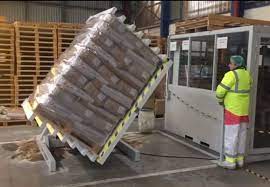
The Engineering Behind Product Safety
Protecting the load is the machine's primary design goal. This is achieved through several key engineering elements that work together to ensure a safe and gentle transfer. These elements are what separate a high-quality machine from a basic one.
Controlled Clamping Pressure
The heart of product safety lies in the clamping system. It's not about brute force; it's about precise control.
- Adjustable Pressure: High-end machines feature adjustable pressure regulation. An operator can set a lower pressure for light, fragile items like bags of chips and a higher pressure for dense, stable loads like canned goods. This is often controlled through a simple interface.
- Pressure Sensors: Advanced systems use sensors to detect the height of the load and apply the optimal pressure automatically. This removes guesswork and ensures consistency.
- Soft-Padded Surfaces: The clamping platforms that touch the product are coated with rubber or other soft materials. This prevents marking or damaging the packaging, preserving the product's shelf appeal.
Smooth and Stable Movement
The motion of the machine is just as important as the clamping force. Sudden jerks or vibrations can cause loads to shift.
- Hydraulic vs. Electric Systems: Both systems are designed for smooth operation. Hydraulic systems offer immense power and are very smooth, while modern electric systems provide excellent precision and control, often with lower noise levels.
- Robust Frame Construction: The machine itself is built from heavy-gauge steel. This robust frame ensures there is no flexing or wobbling during the operation, even with the heaviest loads. The stability of the machine translates directly to the stability of the product.
In my experience building heavy equipment for steel mills, the principles are the same. Whether you are handling a 10-ton steel coil or a 1-ton pallet of goods, the core physics of controlled force, stability, and precision are what guarantee a safe outcome. A well-engineered pallet changer applies these industrial-grade principles to the retail environment.
What are the key considerations when choosing a pallet changer for a sales floor?
You are now convinced of the technology's benefits and safety. The next step is navigating the market to find the right machine for your specific needs. With various models, features, and price points, how do you make the correct choice? Investing in the wrong machine is a costly mistake. It might not fit your space, handle your product range, or be easy enough for your staff to use. A bad investment can be worse than making no investment at all. As someone who has guided many clients through equipment selection, I can tell you that a structured approach is essential. Let’s break down the key factors to consider.
The most important considerations when choosing a pallet changer for a retail environment are its physical footprint and mobility, its load capacity, the range of products and pallet types it can handle, its operational noise level, its built-in safety features, and its overall ease of use for staff who may not be technical experts. Balancing these factors will lead you to the perfect machine for your logistics workflow.
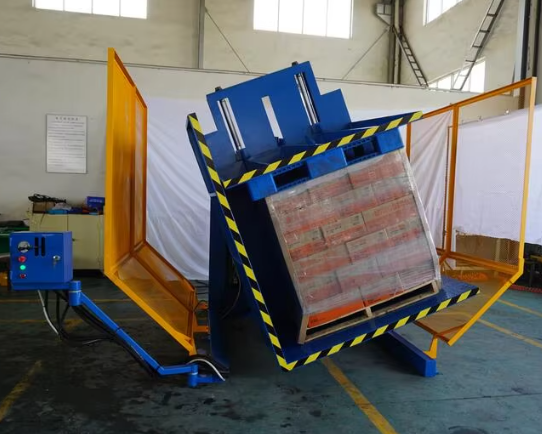
A Practical Checklist for Your Selection Process
Making a good decision requires a clear analysis of your needs against the machine's specifications. This is the same rigorous process a CEO would apply to any major capital expenditure.
1. Physical and Operational Specifications
This is about matching the machine to your products and your space.
- Footprint and Mobility: Do you have a dedicated space in a backroom or warehouse, or do you need to move the machine around? Stationary models are often more powerful but require a fixed location and installation. Mobile pallet changers offer incredible flexibility and are perfect for tighter spaces or multiple use-points.
- Load Capacity and Size: What is the maximum weight and height of the pallets you handle? Be sure to choose a machine with a capacity that exceeds your heaviest loads for a safety margin.
- Pallet and Product Compatibility: Can the machine handle your specific pallet types? This includes standard wood pallets (GMA, CHEP), plastic pallets, and specialized display pallets. Also, consider your product mix. An inverter is great for boxes, but a pusher model is necessary for pails or open-top containers.
2. Safety, Noise, and Usability
These factors are critical for use in or near a customer-facing environment.
- Safety Features: This is non-negotiable. Look for machines enclosed in safety fencing, equipped with light curtains that stop the machine if someone enters the area, and clearly marked emergency stop buttons.
- Noise Level (dB): A loud machine is disruptive in a retail setting. Ask the manufacturer for the decibel rating during operation. Electric models are typically quieter than hydraulic ones.
- Ease of Use: The control panel should be intuitive. Pictograms and simple buttons are better than complex menus. Your staff should be able to operate it safely with minimal training.
3. The Business Case and ROI
Before you sign a purchase order, you must justify the cost.
- Calculate your ROI: A good supplier can help you with this. Analyze your current costs (labor hours, damaged product value) and compare them to the operational savings the machine will deliver. This will give you a clear payback period for your investment. It’s a simple calculation that makes the financial benefit clear.
How can pallet changers be integrated into existing retail logistics without major disruptions?
You've identified the perfect machine. The ROI is clear. But now a new concern arises: the disruption of installation and implementation. The idea of stopping your operations, retraining your entire team, and overhauling your workflow can feel overwhelming. This fear of short-term pain can often prevent long-term gain. A powerful tool is useless if integrating it causes more chaos than it solves. I want to emphasize that a smooth integration is entirely possible with proper planning. A true equipment partner does not just deliver a machine; they help you weave it seamlessly into your daily operations.
Pallet changers can be integrated into existing logistics with minimal disruption. The key is to choose an appropriate model, like a mobile unit that needs no floor fixing, and to plan a phased rollout. Simple, targeted training sessions for operators are very effective. A reliable supplier should provide a clear implementation plan that works around your store's peak hours, ensuring business continues as usual.
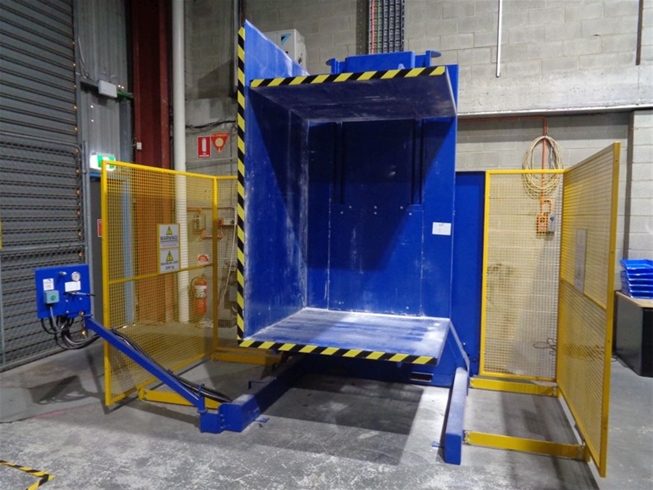
A Step-by-Step Guide to Seamless Integration
A successful integration is not about luck; it is about process. By following a logical sequence of steps, you can introduce this new capability without causing friction in your operations.
Step 1: Analyze Your Current Workflow
Before you do anything else, map out your existing process.
- Identify the Point of Exchange: Where does the pallet swap need to happen? Is it in the receiving dock as soon as trucks arrive? Is it in a backroom staging area? Or is it right near the sales floor aisle?
- Measure Your Current State: Document how long the manual process takes, how many staff members are involved, and the rate of product damage. This data will be your baseline to measure success against.
Step 2: Choose the Right Integration Model
Your workflow analysis will guide your choice between a stationary or mobile unit.
- Mobile Pallet Changers: These are often the easiest to integrate into a retail setting. They require no installation. You simply charge the battery and drive it to the point of need. This provides maximum flexibility and is perfect for testing the concept or serving multiple departments.
- Stationary Pallet Changers: If you have a centralized receiving area where all pallets are processed, a stationary model can be more efficient. It offers higher throughput and can be integrated with conveyor systems. This requires a dedicated footprint and professional installation, which should be planned during off-peak hours.
Step 3: Plan a Phased Rollout and Training
Don't try to change everything overnight.
- Start Small: Implement the machine in one department or for one product category first. This creates a pilot program where you can work out any issues on a small scale.
- Develop Simple SOPs: Create a one-page Standard Operating Procedure with clear, simple steps and pictures. Post it on the machine.
- Conduct Hands-On Training: Training should be practical, not theoretical. Show, don't just tell. A typical training session for an operator should take less than an hour. Focus on safe operation, proper procedure, and the top 2-3 troubleshooting tips.
This planned approach transforms a potentially disruptive event into a controlled, manageable upgrade. It ensures your team feels confident, your operations remain smooth, and you start realizing the benefits from day one.
My Insights
I remember when my own factory, SHJLPACK, was expanding. We were still using an old, semi-automatic wrapping machine for our steel coils. It was slow, wasted a lot of film, and was a constant bottleneck that held back our entire production line. The upfront cost for a new, fully automated wrapping line seemed enormous at the time.
Like any practical business owner, I conducted a strict feasibility analysis. I calculated the potential savings in labor, the reduction in packaging material costs, and, most importantly, the value of increased throughput. The numbers showed that the new machine would pay for itself in just under 18 months. We made the investment.
But the real victory wasn't just the financial return. The biggest win was the new level of stability and predictability in our operations. We eliminated a major source of daily stress and firefighting. This freed up my team, and my own mind, to focus on more important strategic goals—like developing new products and entering new markets—instead of worrying about whether the wrapping machine would break down again.
A pallet changer on a retail sales floor might seem worlds away from a wrapping machine in a steel equipment factory. But the core principle is identical. It's about identifying and eliminating a bottleneck. It's about a strategic investment in technology to create operational stability and efficiency. It’s about viewing equipment not as a simple cost, but as a powerful tool to reduce operational drag, lower hidden costs like damaged goods and wasted labor, and increase your primary output—sales.
For a leader who has already embraced innovation to improve efficiency, whether through energy-saving systems or smart scheduling platforms, adopting a tool like a pallet changer is the next logical step. It's another move in the relentless and necessary pursuit of operational excellence.
Conclusion
A pallet changing machine transforms a slow, risky, manual task into a fast, safe, and automated process. It directly boosts sales floor productivity, enhances product presentation, and delivers a clear return on investment.



